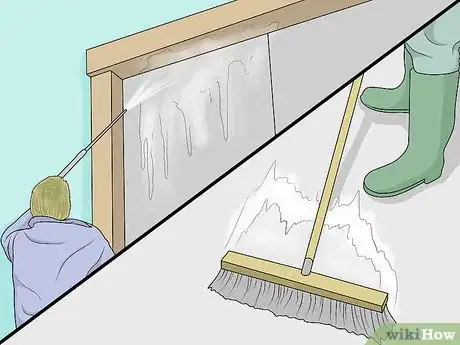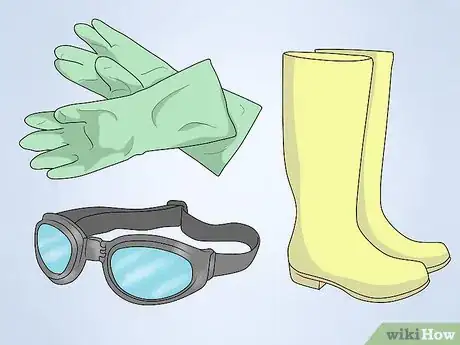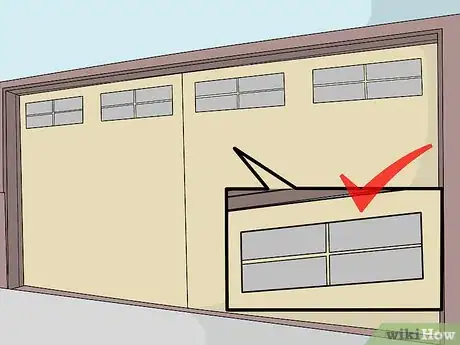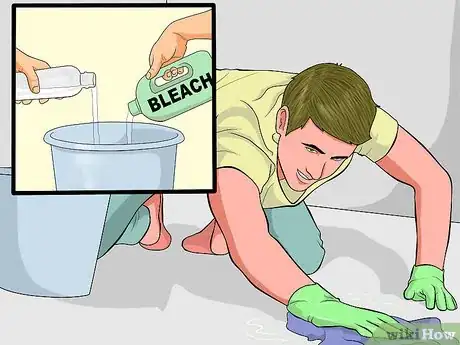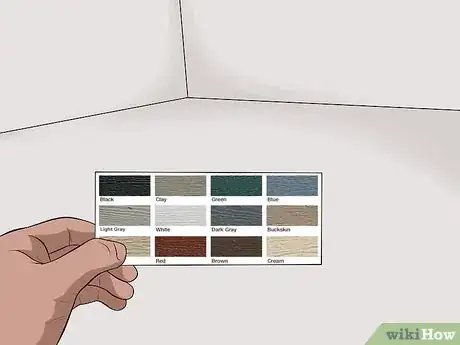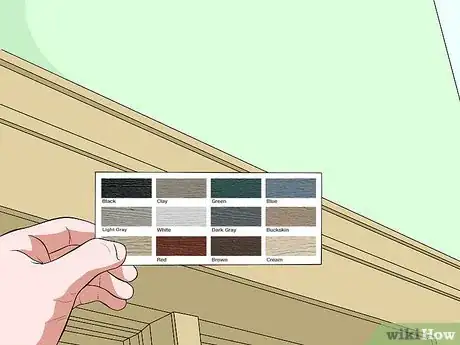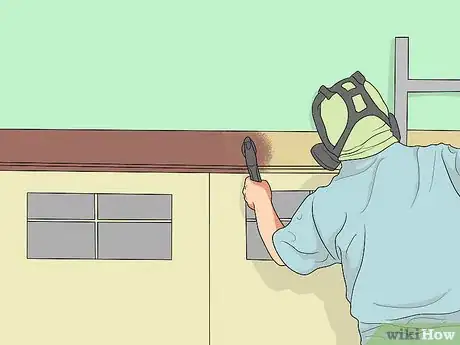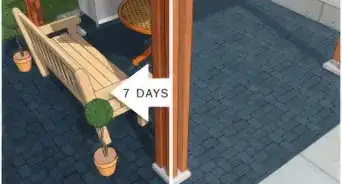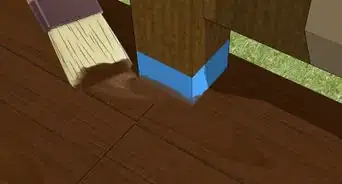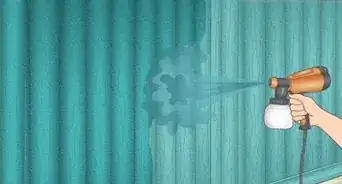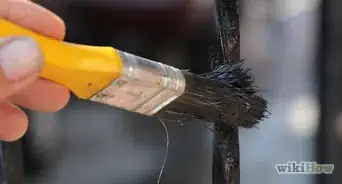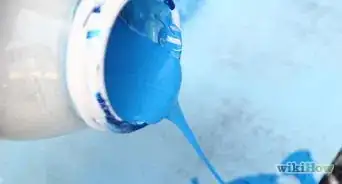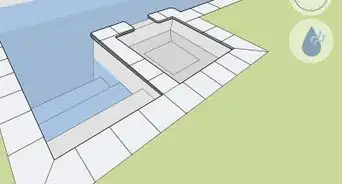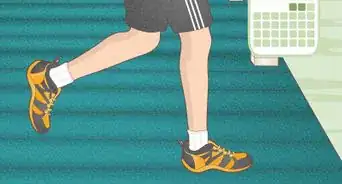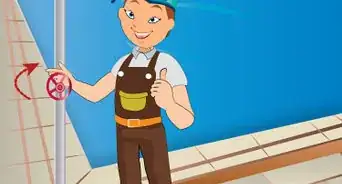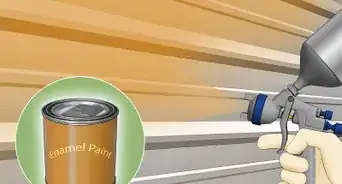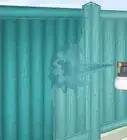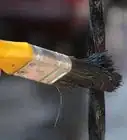X
wikiHow is a “wiki,” similar to Wikipedia, which means that many of our articles are co-written by multiple authors. To create this article, volunteer authors worked to edit and improve it over time.
This article has been viewed 83,305 times.
Learn more...
One of the nice things about painting your garage is that there is a lot of ventilation and you can pretty much work at your own pace because you are not exactly living in the space you are working in. Although you do not have to be as neat and tidy as you would painting a living room, you should still try to be professional and not sloppy. Following just a few rules of thumb, you can paint a garage in a quality manner that you can be proud of.
Steps
Method 1
Method 1 of 3:
Priming and Painting the Floor
-
1Clean your garage. This means power washing the outside and scrubbing the inside. If you are painting the garage floor as well, there are a lot of other things you need to do to prepare that surface. The last thing you want is to spend a lot of time and sweat painting your garage only to see the paint peeling and looking ragged next season. Do it right the first time.[1]
-
2Wear personal protective equipment. This means goggles and chemical resistant gloves and boots. You will need some pretty strong stuff to get that oil off the old concrete and get it ready to accept a coat of paint.Advertisement
-
3Ventilate the garage. The overhead garage door should be open, at least at the cleaning phase. If it is too windy, opening it up 6-8 inches (15.24 - 20.32 cm)should be sufficient to ventilate, but keep the outside from coming in and sticking to your new floor.[2]
-
4Mix a 3-1 solution of bleach and water to soak and scrub the floor. Let it sit for a few minutes before scrubbing. Make sure you rinse it well when you are done. Seal up any cracks and repair any damage to the concrete after the water has evaporated.
-
5Pick your garage floor paint color and purchase the amount necessary to get the job done. By the time you get this all together, the crack repair and sealant should be completely dry. If not, give it more time. It has to be completely dry before you put down the paint. You may have to etch the floor if it is newer or does not readily absorb water. If it doesn't absorb water, it is not going to absorb the paint.
-
6Apply a coat of primer after the floor is completely dry and ready. A primer will make your floor look 100 percent better and make it last longer. It is worth the time, effort and extra money. After at least 1 day, when the primer is completely dried, you can apply your paint. Make sure with both your priming and your top coat, you start from the back of the garage and work your way to the front so you can exit without walking over your masterpiece.
Advertisement
Method 2
Method 2 of 3:
Applying Paint to the Exterior Garage
-
1Power wash the siding first. Pay special attention to areas that have mildew or are badly stained.[3]
-
2Decide on your color and purchase a paint that is compatible with the type of siding you have on your garage, whether it is aluminum, vinyl, cedar plank or some other substance.
-
3Paint from the top down, preferably using a power paint sprayer, which is more efficient than a brush or a roller for this application.[4]
Advertisement
Method 3
Method 3 of 3:
Priming and Painting the Interior Walls
-
1Prepare the interior walls and ceiling as you would inside your home. Patch holes, scrapes and tears with Spackle or joint compound. Sand it smooth and put a stain blocking primer undercoat on it.
-
2Let the primer dry and then apply exterior paint. Do not use interior paint. Even though the inside of your garage is not exposed to the elements, it is neither protected as the inside of your home. Strong fluctuations in temperature and moisture content are too hard on interior paint.[5]
Advertisement
Community Q&A
-
QuestionDo I need to paint garage walls if they are already primed?
 Community AnswerYes, absolutely. Paint has all of the durability, primer has nearly none. Primer just helps to adhere paint and hide or telegraph wall imperfections.
Community AnswerYes, absolutely. Paint has all of the durability, primer has nearly none. Primer just helps to adhere paint and hide or telegraph wall imperfections.
Advertisement
Things You'll Need
- Paint
- Power Washer
- Chemical resistant personal protective equipment
- Course bristle brush
- Paint power sprayer
References
- ↑ https://www.bobvila.com/articles/how-to-paint-a-garage-floor/
- ↑ https://www.bobvila.com/articles/how-to-paint-a-garage-floor/
- ↑ https://www.youtube.com/watch?v=fZJfXY4LMcA
- ↑ https://www.thisoldhouse.com/how-to/putting-fresh-coat-paint-your-exterior
- ↑ https://www.realsimple.com/home-organizing/home-improvement/painting/paint-wall
About This Article
Advertisement
